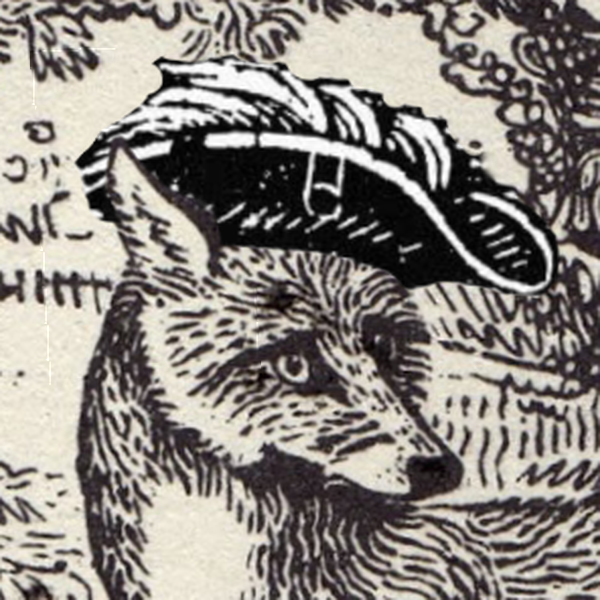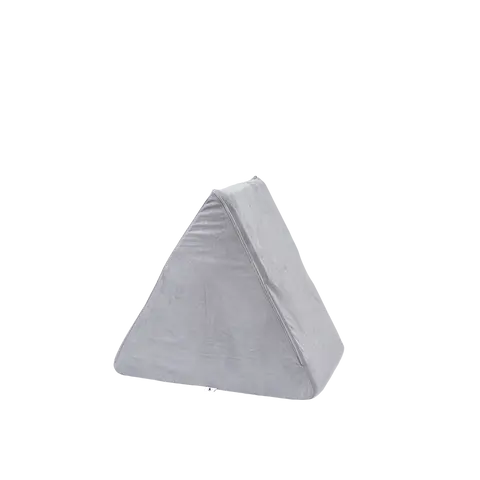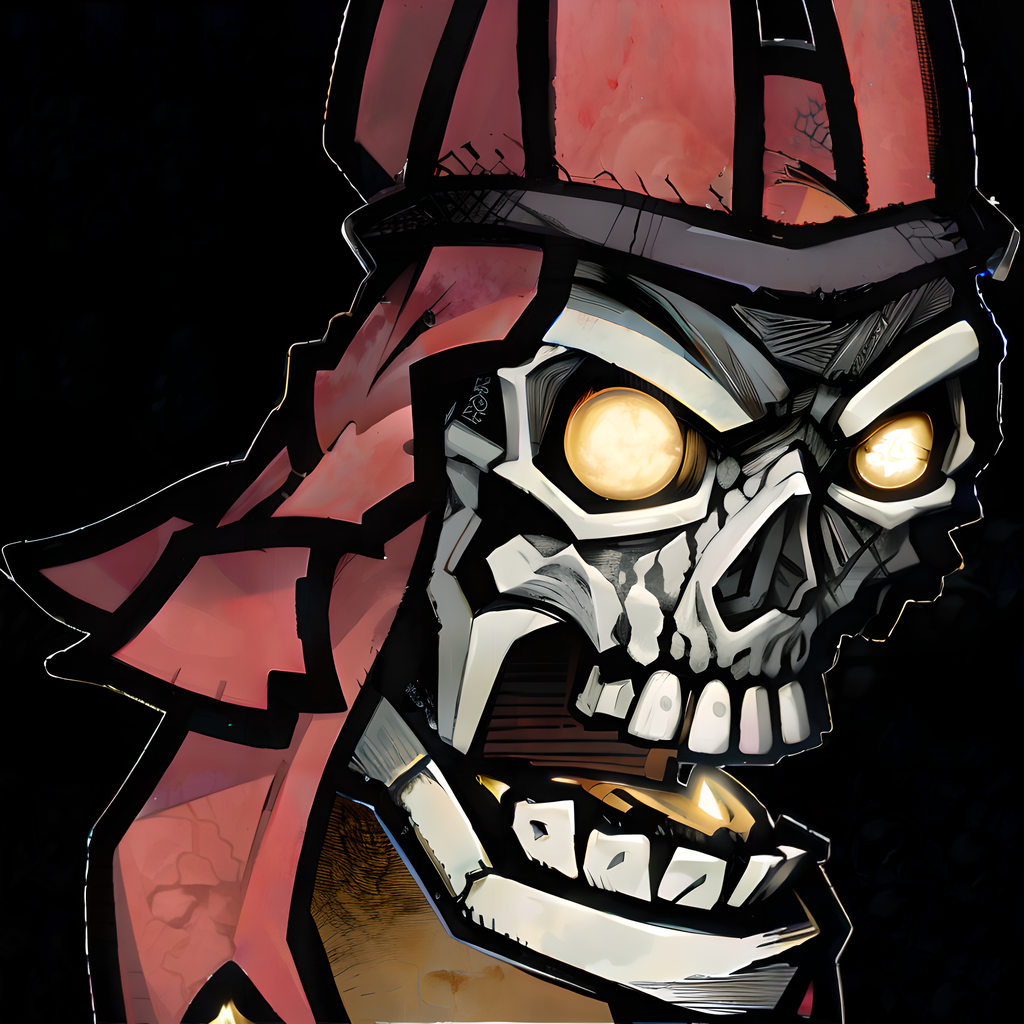I’m kind of mixed on this, because I think AI art is pretty cool, but I also hate our current copyright system. I kind of agree with the copyright office that images generated by a prompt should not be covered by copyright. What if I just type in “cat” and set the seed to 1, and try to copyright that? What if I copyright the image for EVERY seed with that prompt? Literally anyone else could easily generate the exact same image, and are they going to be in violation of my copyright now?
It gets really complicated though. What if I draw a sketch and then feed it into stable diffusion to flesh it out further? Then I do extensive inpainting across the whole thing, then I take it to Photoshop and do further edits. At this point, I think it’s fair to say this is an original image of my own creation, which should be eligible for copyright protection.
I can understand partially your argument, and I’d agree the work you personally do is your own, but the art generated by the AI is not.
It’s as much your art as the person who googles extensively to find images that they ten cut out and place into your art. It’s as much your art as taking it to another person, asking them to make the edits, and revising.
Now, if the image you get from google is creative commons, and the revision artist agrees to signing off their rights, you’d be able to copywrite your work. I’d agree to the same situation with AI, if the people who’s art makes up the model agree to that circumstance, you should be able to copywrite. Otherwise you’re just taking credit for others work because you described it well enough while ingraining it into your own.
No specific person’s art is being put into my generated image, unlike if I were to copy an image from Google. If a model is trained on 1 trillion images, then every single one of those images influenced the weights in the model which then resulted in the output.
But my argument there is that when the generation becomes very integrated into the workflow as a tool, then it can be nearly impossible to separate out what was actually created by me vs what the ai did.
I disagree, you can see signatures and figures drawn by individual artists in even the largest models of today. Also, only a fraction are what you specified
Though trillions may be used, only billions are of dragons, millions of clocks, and thousands of something more specific or in certain style. A picture of a cat has nothing to do with the prompt “rick and Morty inflation porn, big feet, (feet:1.3), cartoon, drawn, colourful”
I’ve worked in the AI field specializing in vectorization, a method of creating automated systems to catch failures, and it’s clear to me what gets imprinted onto the nodes is just other peoples work. The line-work, colouration, composition, etc. on a particular output will be from a tiny fraction of the models training and will be, individually per addition or edit, directly taken from a handful of images.
This is why you can get text based or code based AI to word for word output some of their trained work. Same with image based, though only pieces again.
All the actual decision making, the colouration, the composition, line-work, perspective, base stylistic choice, etc. will be made by another person or people before being detected by the AI and output when the correct input (prompt) is given.
To be clear, If I had called Pokemon fish whenever you put in the word fish something stylistically Pokemon would be output with nothing to do with fish. It’s not learning what our prompt actually means just what gets it a head pat from the dev.
It’s not just learning what a word means and outputting a new image, it’s finding a way to output the original data in a way that makes somebody like me, an AI dev, say “yeah that’s about right”. That’s all
Once more, because each time I stare I hate AI I get misinterpreted, I hate that it’s taking without permission. If that is granted then it’s perfectly moral.
If I like a particular element of a piece of art, like the way they painted a distinctive piece of clothing in a portrait, and I copy that element in my own work, am I stealing their work?
Did you trace the linework, did you copy near exactly the colouration and composition, could you place one over the other and see it’s very close to the origional? if so, yes. Yes you did. If you think to yourself, I like these specific elements of this art and am going to take them into account while creating a new piece, with new ideas, then no. You did not. AI art does the first. It doesn’t know what makes up the art. It can’t. It just knows if I take this data from the origional data set and place it in this manner when this term is present I have done well. It’s just pattern recognition, no critical thought
I agree that AI work should not have copyright protection. Even with human intervention it still collects data, without expressed permission, from numerous sources.
This will actually protect smaller artists. It will prevent giant companies from profiting from their work without credit or payment.
I agree that AI work should not have copyright protection. Even with human intervention it still collects data, without expressed permission, from numerous sources.
Generative AI models could be trained using only on public domain and royalty free images. Should the output of those be eligible for copyright, but not if they also had unlicensed training data?
It seems there two separate arguments being conflated in this debate. One is whether using copyrighted works as AI training data is fair use. The other is whether creative workers should be protected from displacement by AI.
But that won’t happen. Companies have money, and by extension, lobbyists. It doesn’t matter what the general consensus is, they will get their way.
So we kill open source models, and proprietary data models like adobe are fine, so they can be the only resource and continue rent seeking while independent artists can eat dirt.
Whether or not the model learned from my art is probably not going to affect me in any way shape or form, unless I’m worried about being used as a prompt so people could use me as a compass while directing their new image aesthetic. Disney/warner could already hire someone to do that 100% legally, so it’s just the other peasants im worried about. I don’t think the peasants are the problem when it comes to the wellbeing and support of artists
Ok that’s entirely disingenuous. You can make an AI model open source where you get real permission from artists instead of taking their work without permission and using it to replace them.
It’s entirely possible. Will the large orgs have more resources to collect art? No shit, yeah, and they’ll have better PCs to train on too. No matter what, allowed to take from hard working small artists while attempting to make them irrelevant or not, the big corps will always have a heads up here.
Unless, like so many other projects, an extremely complicated system benefits from collaborative work inside an open environment. Shocking, I know, working on merit over money.
You don’t want a conversation though you just want “epic dunks”
The amount of training data needed for a model is so huge that you’d have to use only artwork that was preemptively licensed for that purpose. Individually asking artists for permission to use their work would be far too expensive even if they all agreed to let you use their work for free.
And why is that a problem?
Artists should have control over their work. It’s not my problem that a big company vs a small company is stealing my work, I don’t want either of them to.
I no longer post anything online that I create cause I’d rather nobody see it than it be stolen for AI training.
That is correct, though there could be campaigns to collect art otherwise. There are plenty of artists in the open source world who could do it, and asking individuals to signal boost these calls to action can get more push. Once more, no matter what, big corps will always have more monitary resources. The power of open source is volunteer manpower and passion. Even if these weren’t the case, the moral argument still stands in using a persons work to replace them without permission.
Regardless of that even, what this will do is cause stagnation in the art field if not protected. Nobodies going to share their art, their method, or their ideas freely in a world where doing so allows a massive corp to take it freely without permission, thus replacing them. This kills ideas of open distribution of art and art information. It will become hidden, and new ideas, new art, will not be available to view.
Allowing people to take without permission will only ever hurt the small artists. Disney will always be able to just “take” any art they make.
Also, you’re not entirely correct on that. Models made for specific purposes don’t actually need the absurd amount generalist models need. However in the context of current expectations yeah, you’re right on quantity.
I believe a person can still sell or market art that is AI created. I just believe they shouldn’t have total ownership of the work.
Already most creators don’t fret over fanart or fanfiction so there is wiggle room for fair-use. It’s a lot like the game modding scene. Usually modders use pre-existing assets or code to create something new.
Let people play but not own AI work for now.
Big companies like Adobe and Google can get the rights to use material to train their models. If stricter laws get passed it will only slightly inconvenience the larger companies, but might completely destroy any of the smaller companies or open-source versions available.
The anti-ai lawsuits aren’t going to stop ai art/etc, just determine whether it’s completely controlled by the current tech giants or not.
Sadly no matter what, the big media companies are going to have a huge advantage in everything because of decades of lobbying etc.
I think people should still be able to profit from selling the image themselves, however, I don’t think we have enough knowledge on how AI will truly impact things. If it becomes a minor fad and is just a tool to help speed a process I think the law doesn’t need to change much.
If AI becomes the majority creator on projects then we have to have this conversation about who owns what.
Close models will probably be the future, much like stock photos, and people will have to pay to access the models.
In the end big business will always fuck us over, copyright or not.
This is the best summary I could come up with:
The ruling raised an important question: Was the issue just that Thaler should have listed himself, rather than his AI system, as the image’s creator?
Then on September 5, the office rejected the copyright for Théâtre D’opéra Spatial, holding that it “was not the product of human authorship” because it had been created by the AI software Midjourney.
The nation’s highest court acknowledged that “ordinary” photographs may not merit copyright protection because they may be a “mere mechanical reproduction” of some scene.
So even though a mechanical process captured the image, it nevertheless reflected creative choices by the photographer, and therefore deserved copyright protection.
Or consider the time an Associated Press photographer, Mannie Garcia, snapped a photo of then-Sen. Barack Obama listening to George Clooney during a 2006 panel discussion.
Two years later, artist Shepard Fairey used Garcia’s photo as the basis for an illustration called “Obama Hope” that was ubiquitous during the 2008 presidential campaign.
The original article contains 827 words, the summary contains 156 words. Saved 81%. I’m a bot and I’m open source!






